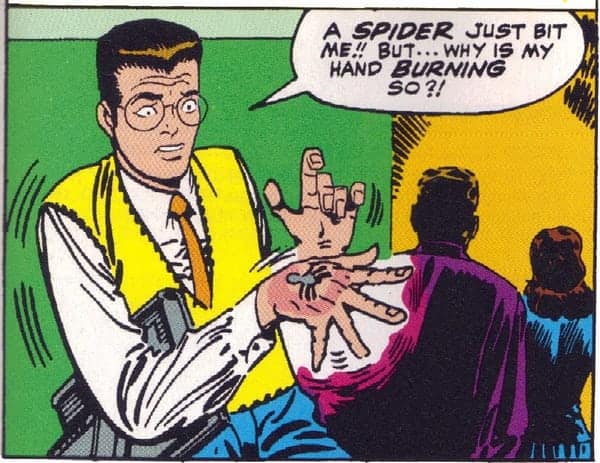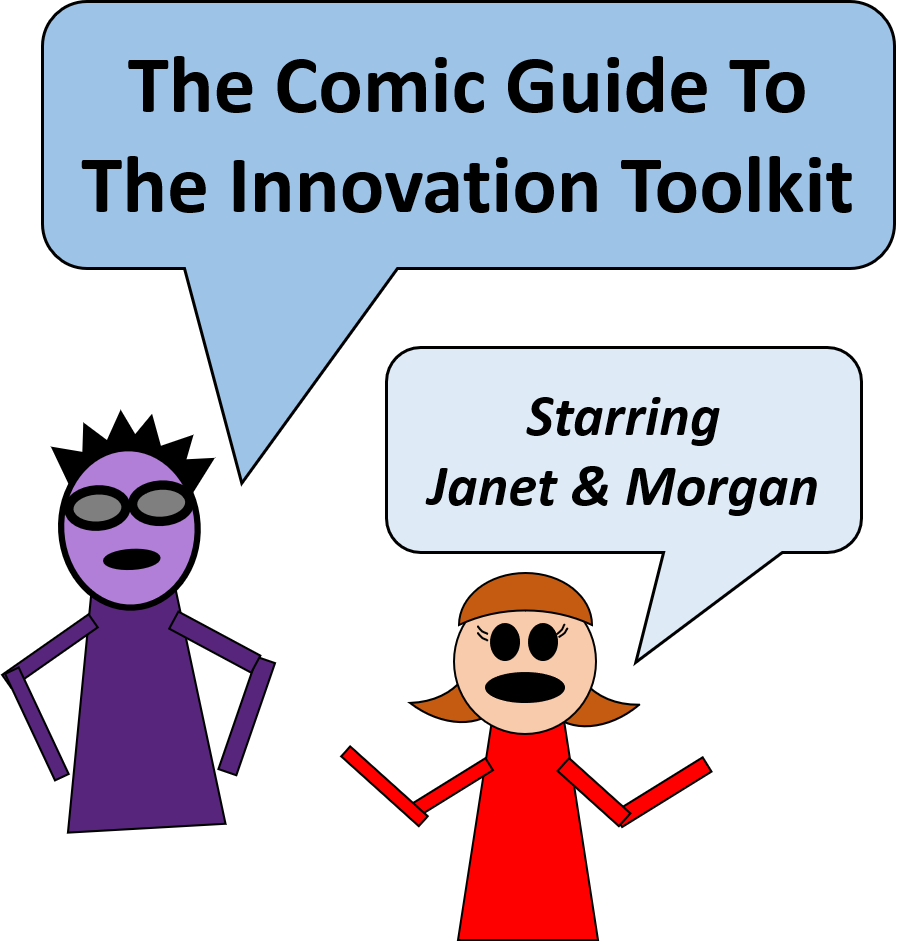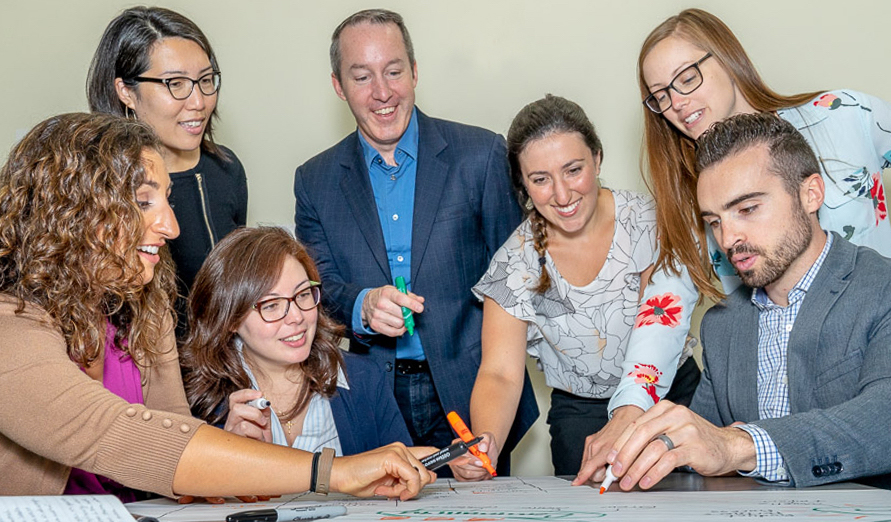by Aileen Laughlin | Apr 8, 2019 | Team Toolkit
 In today’s episode, we’re telling the Team Toolkit’s Origin Story! No, we weren’t all bitten by radioactive spiders or exposed to gamma rays, although a couple of us are still hoping that will happen eventually.
In today’s episode, we’re telling the Team Toolkit’s Origin Story! No, we weren’t all bitten by radioactive spiders or exposed to gamma rays, although a couple of us are still hoping that will happen eventually.
Team Toolkit actually came together through an innovation interest group stood up by Dan Ward. Our first project was consulting for a start-up interested in tailoring their product for the military. Little did we know where this journey would take us!
While working with the start-up, we found a lot of overlap in the problems and challenges we encounter with our other work. We began to ask how we might help others think and work more like innovators. How might we shift the mindset from solutions to understanding problems, helping to get a job done, and delivering value? We looked across industry and discovered the concept of an innovation toolkit, a collection of methods, tools, and techniques to help individuals kick-start innovation.
One of the more important things we learned during our research is that toolkits 1) require tailoring for your problems and culture and 2) can’t just be tossed over the fence with a “good luck.”
We set out to tailor our toolkit by surveying dozens of toolkits from industry, academia, and government. We took our knowledge of MITRE and our Sponsor’s problems and paired it with our experiences successfully applying these tools across projects and ended up with the initial 24 tools found on our website. (Yes, we used the toolkit to develop the toolkit!)
We began experimenting by offering it up to projects and programs, found some early adopters and champions and it really took off from there. But that’s not the end of the story! We’re constantly gathering feedback from users so that we can further iterate on the toolkit. Our goal is to build a widespread community of practitioners and innovators to keep the toolkit contents fresh and provide a platform for sharing best practices, tips, and success stories. Join us and share your story!
by jessicay | Mar 25, 2019 | Team Toolkit

Photo by Duy Pham on Unsplash
In Andrew Corbett’s Harvard Business Review article “The Myth of the Intrapreneur,” he argues that although the Intrapreneur is held up as a driver of innovation who swoops in and saves the day, for effective and real innovation, it “has to be a company-wide endeavor, supported from top to bottom by systems, structures, and a company culture that nurtures transformative ideas and products.” Although I agree that Corbett’s argument is sound, I still believe that the intrapreneurial spirit can be a powerful catalyst and intrapreneurs can be the pathfinders to create that necessary institutionalized support. Someone has to be the first person or part of the first team to do something new.
Even though we are lucky enough to work in an organization that supports employee driven initiatives, as evidenced by MITRE’s independent research and development to program, Team Toolkit had still had to explore and develop non-traditional means of funding and support. We started with advocating for and using our tools on our regular work projects. This allowed us to test individual tools’ applicability, effectiveness, and explanation. Once we decided we wanted to do more, we carved out time outside of our regular work responsibilities. However, we realized that to create something sustainable, we needed funding to make the Innovation Toolkit more than just a passion project.
We created formal proposals for existing sources of funding and we knocked on doors to create new sources of funding. The truth is that we were not successful at the beginning. In fact, we had to do a lot of unfunded work and half funded work to create some early wins so that we could bring those as proof of concept. With a lot of outreach and using our institutional wisdom, we were able to identify some of early adopters and patrons who then became our champions. We needed to do some trailblazing to start something new and step outside our usual line of work.
Corbett’s article makes a great argument for changing an organization’s culture and structure to support innovation to make it sustainable and repeatable. I think the real misconceptions about intrapreneurs is that they are lone catalysts for innovation. Real change requires teams, stakeholders, and champions to work together. Intrapreneurs often have the passion and initiative needed to bring people together and focus resources. In our case, we started our journey with the desire to work collaboratively with others along the way to cultivate the collective wisdom of fellow practitioners and to build community around the Innovation Toolkit. We have always seen this as the key to its sustainability because through the community is how it will continue to evolve and grow to meet the needs of the innovation ecosystem.
So we invite you to tap into that intrapreneurial spirit, in whatever kind of organization you are currently in, and dare to reach out to others to make change and try to do something new.

by dbward | Mar 4, 2019 | Team Toolkit
We have a lot of fun telling people about the Innovation Toolkit – in person, in workshops, and in briefings. But we know we can’t reach everyone, so we recruited two comic characters to help us out.
Janet and Morgan first appeared in a comic Dan wrote for UX Magazine. When we launched ITK, we called them back into action to tell the ITK story. Download your own copy of The Comic Guide To The Innovation Toolkit right here, and maybe even pass the link along to your friends!

by rgregorio | Jan 22, 2019 | Team Toolkit, Tools 101
You’ve decided to check out some of the MITRE Innovation Toolkit (ITK) methods for creative problem solving, but not sure where to start? A list of 24 oddly named tools (“What the heck is a TRIZ Prism?”) dauntingly stares back at you. Don’t worry – we can help find the right tool for you!
Start by asking yourself some questions about your project or problem. Is the team just getting started, or are things well under way? What are you looking to accomplish? Where are you trying to go? When we work directly with ITK users, these are some of the questions we use to figure out how we can best help.
Once you’ve got a sense of where you are and where you’re heading, click over to the Categories page. There you’ll find groupings based on where you are in your process.
You’ll notice that while one of the categories is “Generate Ideas,” our toolkit offers methods that go far beyond brainstorming. For example, tools in the “Frame Problem” category help are usually most relevant early in the process. In contrast, the tools in the Reduce Complexity category tend to be particularly helpful at a project’s later stages.
Project teams often struggle to articulate the problem they’re trying to solve or have varying definitions amongst the team members. If that’s where you’re at, the Problem Framing tool can help build consensus. Other times, teams lack a good understanding of their users – that’s where the Persona tool comes in. And if complexity is getting out of control, try Trimming.
Here’s a final tip: each tool’s description includes a brief explanation of When and Why to use it. You may want to browse through the collection and see what catches your attention.
And of course, feel free to reach out to usat any time!
Post by Rachel Gregorio

by rgregorio | Dec 20, 2018 | Team Toolkit
Welcome to the ITK Community!
We’re excited to launch the Innovation Toolkit blog, our latest step in building the larger ITK community! This is a place where we’ll provide insider knowledge on the Toolkit and where you can ask questions, post comments, and provide feedback on our tools.
Our cross-disciplinary team of engineers curated our current Toolkit based on the unique challenges faced by our MITRE colleagues, sponsors, and partners. With your input, we plan to grow and improve the Toolkit into an even more adaptable resource for every user. Each piece of feedback you provide will help us help you think more creatively, solve critical challenges, and ultimately make the nation a safer place.
So without further ado, we launch our first post with an in-depth look at our journey. Learn more about who we are, what we do, and how the Toolkit came to be in this Innovation Toolkit spotlight from MITRE.org. Enjoy!
Pop Open MITRE’s Toolkit to Discover Pathways to Innovative Thinking
And remember to leave us your comments in the box below or email us at itk@mitre.org. We are excited to welcome you to the ITK community!
– The Innovation Toolkit Team





